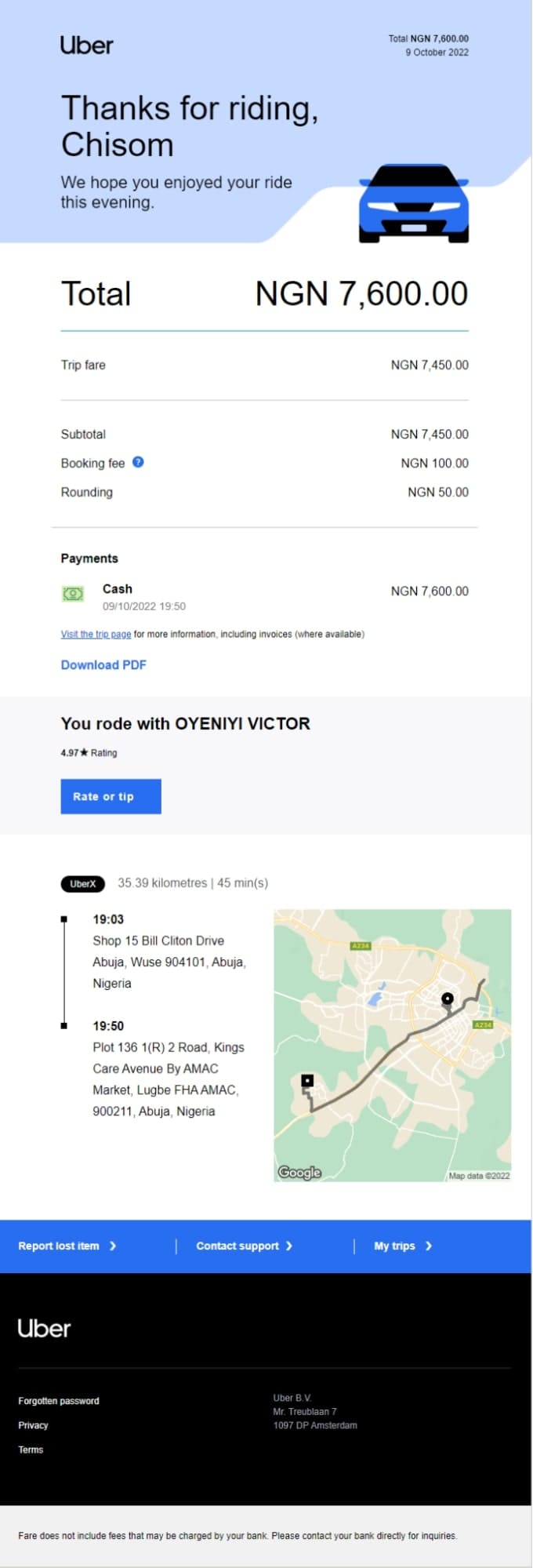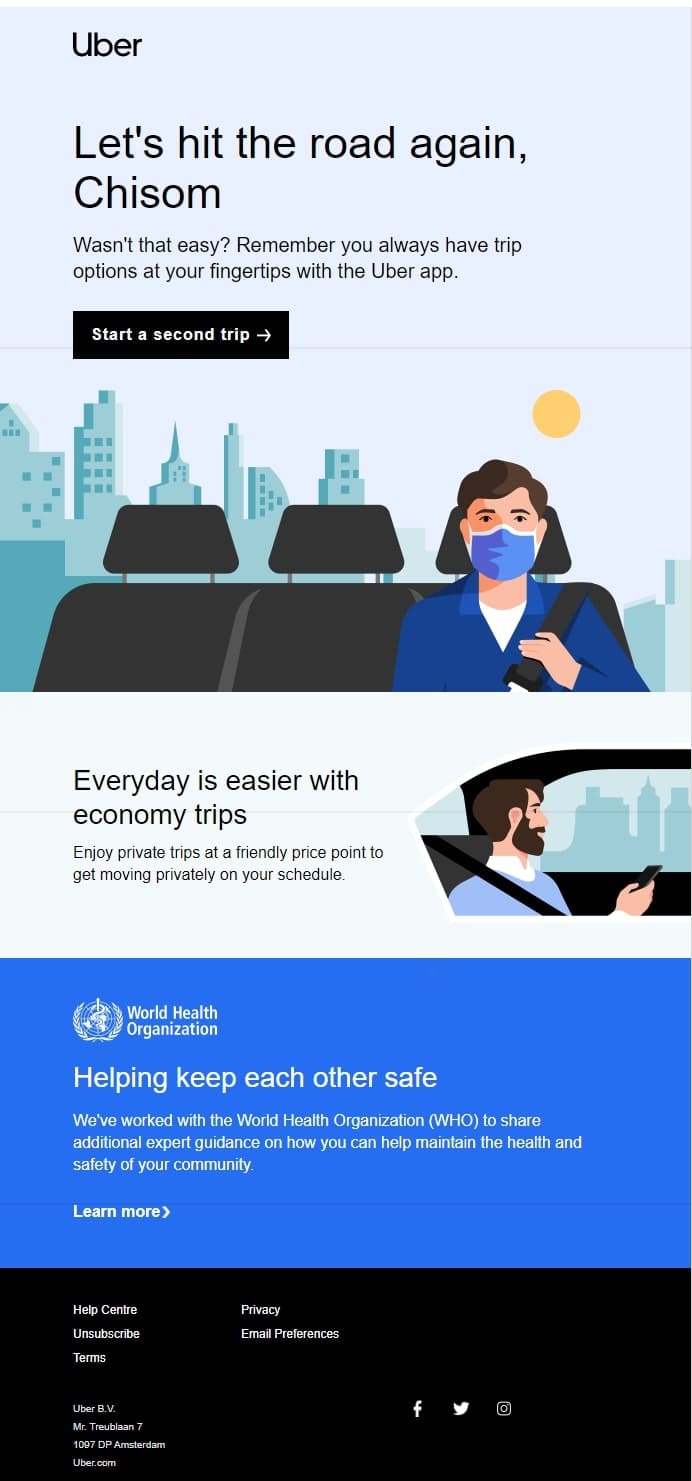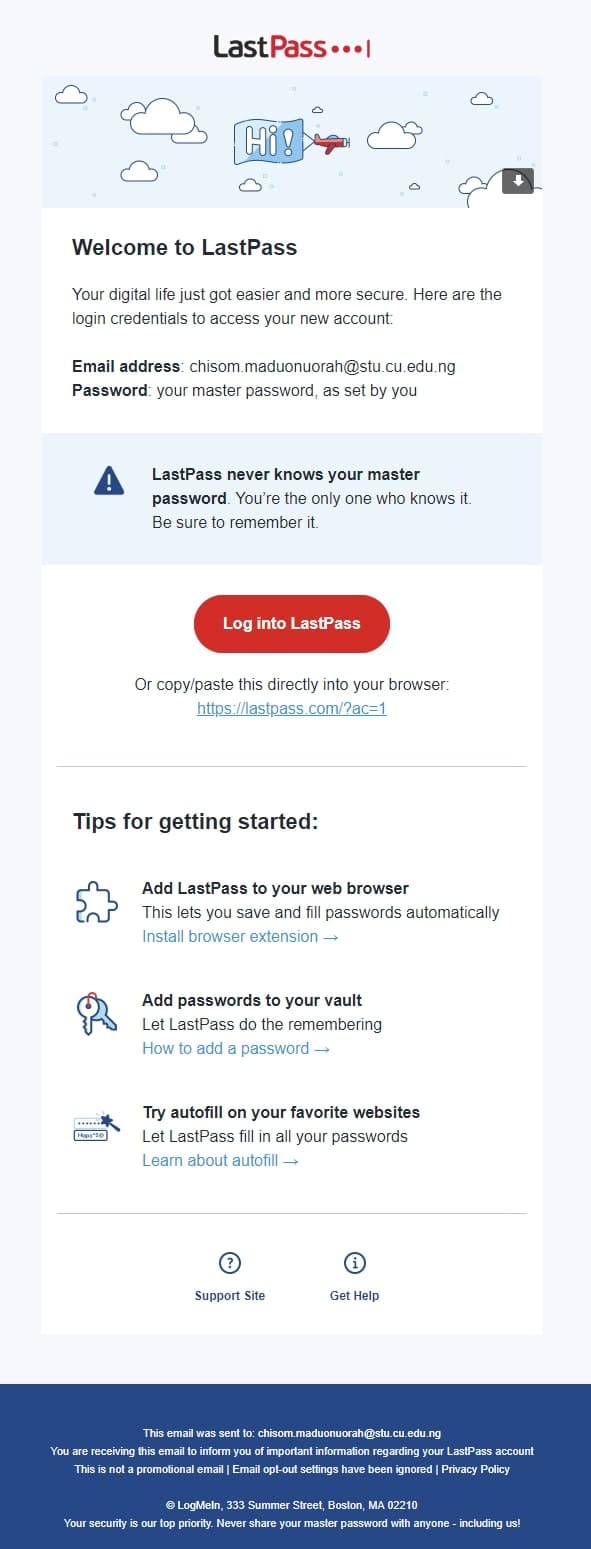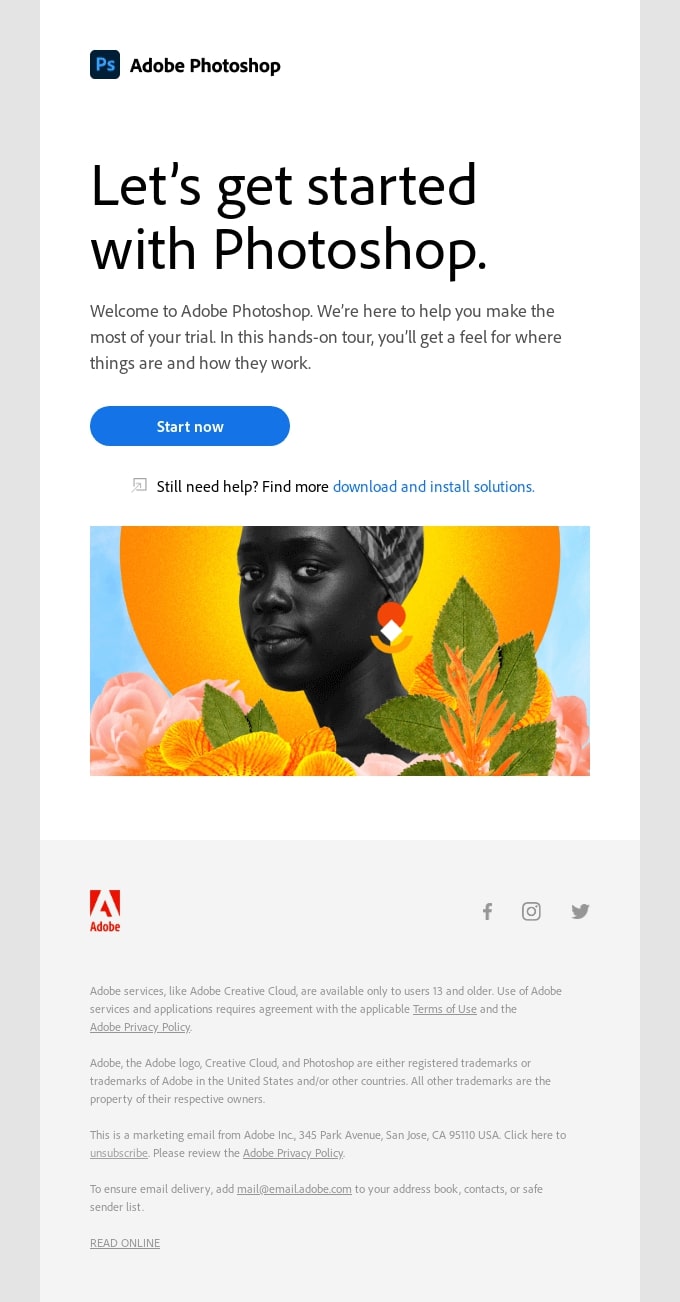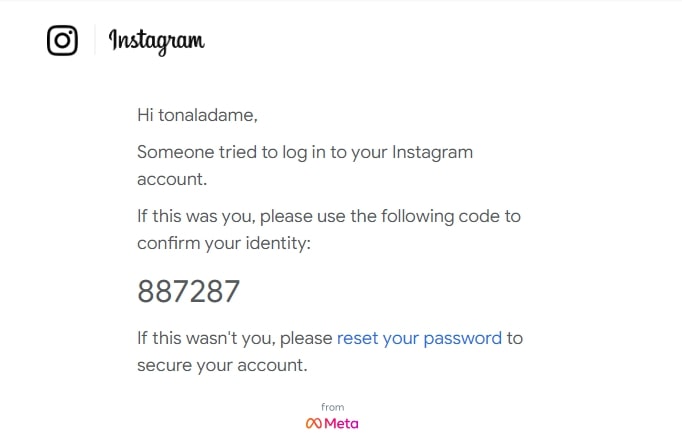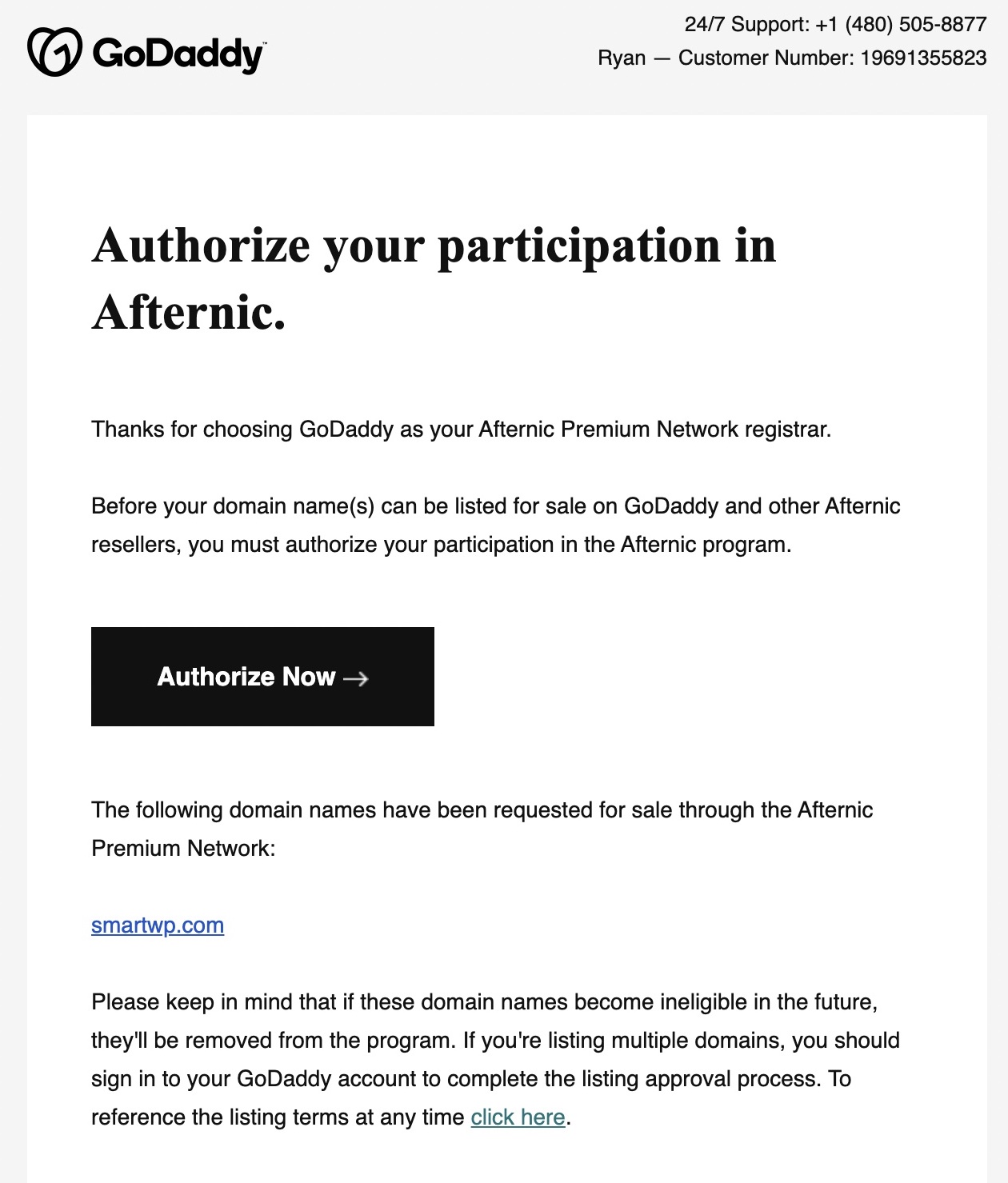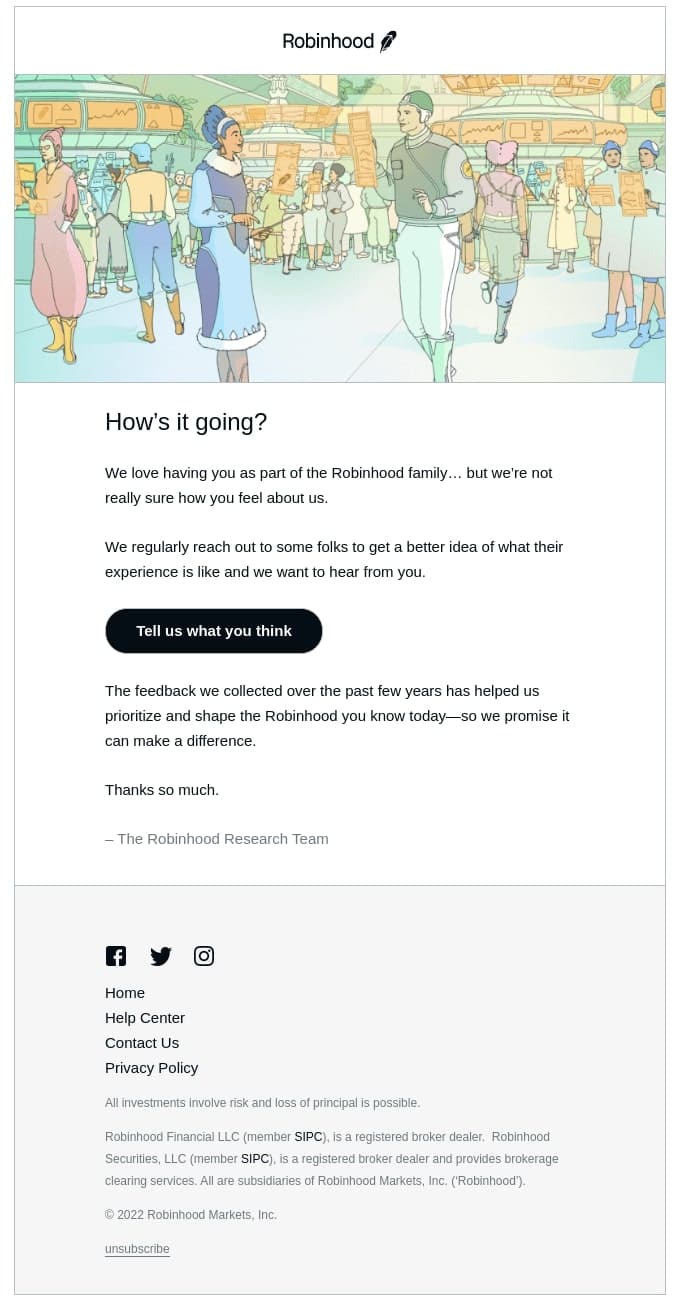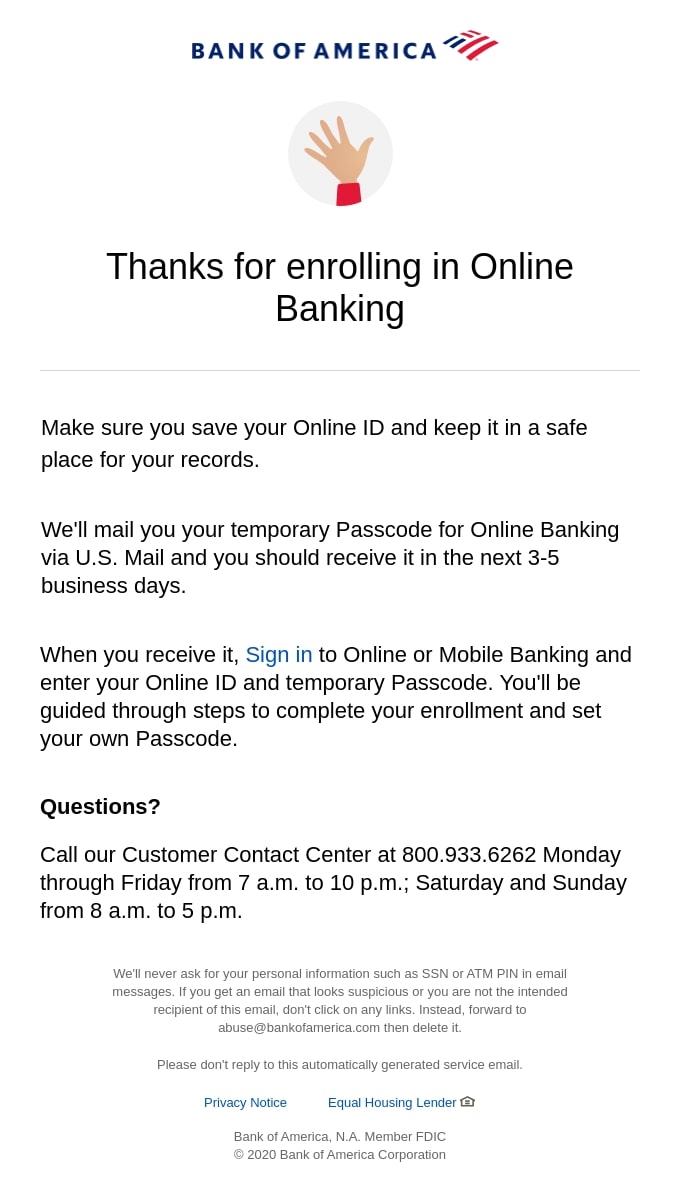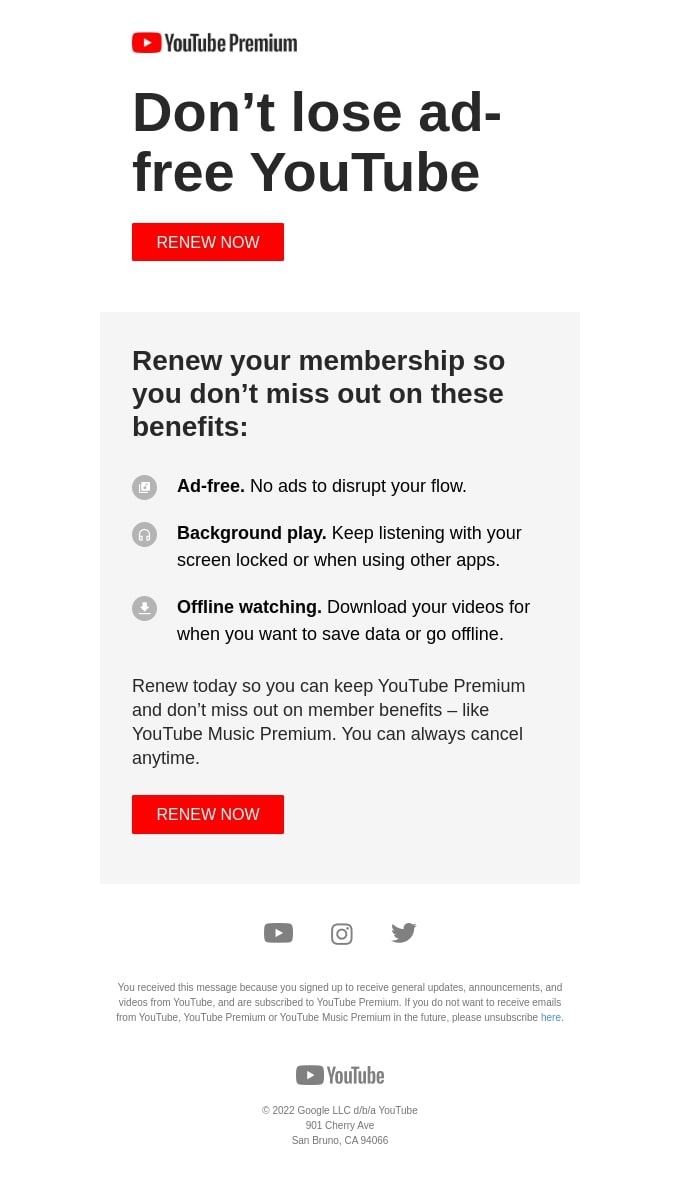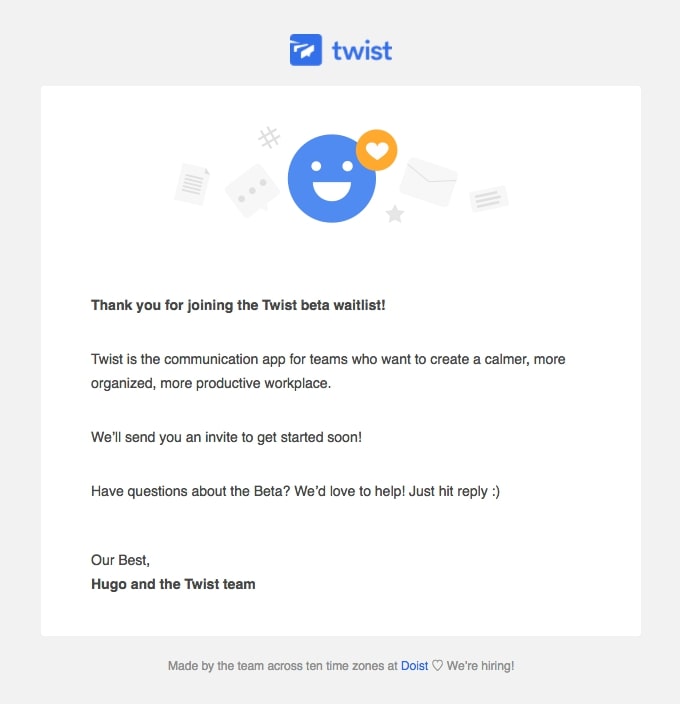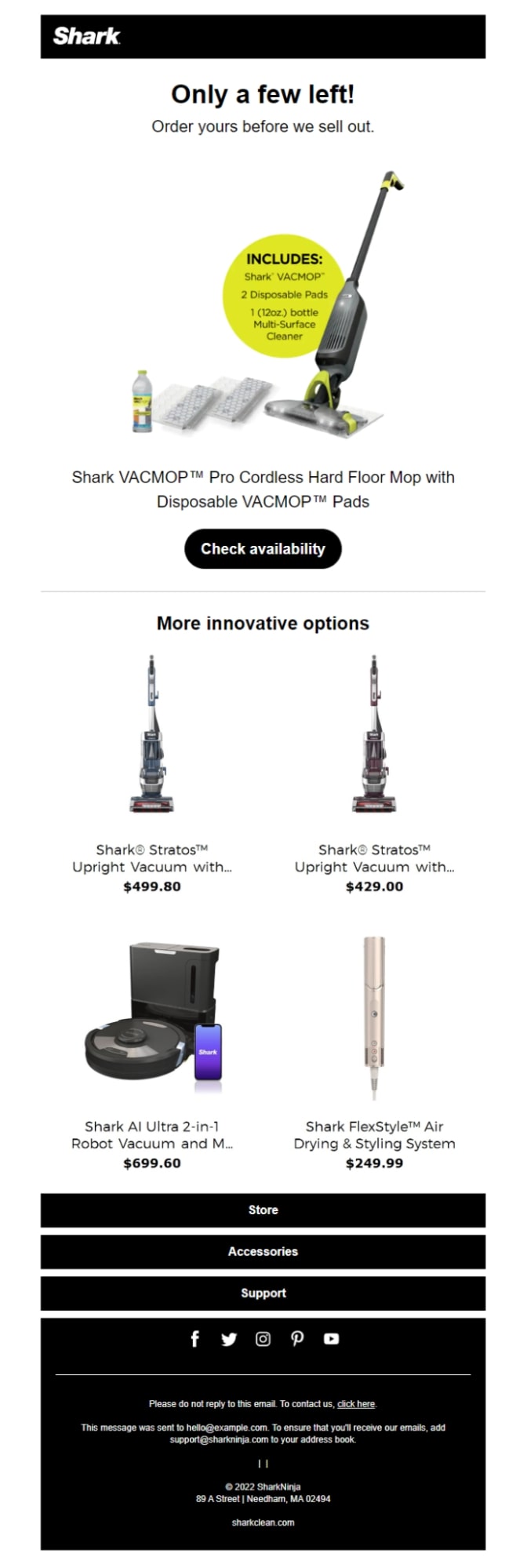Remember when you created an account on a website and received an email to confirm your registration? The email triggered by your sign-up is a typical example of a typical example of a transactional email. This is the type of messages you receive in response to an action you take on a website or web application. Every internet user has received this type of email.
From this article, you’ll learn what transactional emails are, their types, and how to use them.
Transactional Email Definition
A transactional email is an email that is sent to an individual recipient following a commercial transaction or specific action performed by that person, such as a purchase in your connected store or a password reset request. They are an integral part of a product or service that a customer requests, so businesses don't need to obtain consent to send them.
You surely send these types of emails to customers if you run an online business. For example, if someone orders a product from your online store, you need to send an order confirmation. The confirmation is what assures the customer that the transaction will go as planned.
If you’re seeking a clear answer to the question “What is a transactional email?”, then you’ve come to the right place. We’re going to dive deeper into examples of this type of email and how it compares to a marketing email.
Transactional Emails vs. Marketing Emails
Transactional emails and marketing emails have different purposes in the customer interaction chain. The former is what you send to facilitate a transaction that a customer has already agreed to. On the other hand, marketing emails are what you send to promote your product and compel the recipient to initiate a transaction.
In most cases, you don't need permission from the recipient to send a transactional email, but you must obtain consent to send marketing emails. Any marketing email sent without consent constitutes spam, which can harm your brand’s reputation and your sending reputation.
Customers cannot unsubscribe from transactional emails, whereas you must provide a way for recipients to unsubscribe from marketing emails.
Transactional emails have higher engagement rates than marketing emails. This happens because such emails are initiated by the recipient, so they'll have to interact with them to complete a transaction. In contrast, marketing emails are initiated by the sender hoping to get the recipient’s attention — the recipient has nothing to lose by ignoring it.
It’s advisable for businesses to use separate sender addresses for transactional and marketing emails. If possible, you should also use separate IP addresses and domain names for each function. Doing so increases the chance that a transactional email will land in the user's primary inbox instead of the promotions tab.
Here are respective examples of transactional and marketing emails from a popular ridesharing app, Uber:
Example of a Transactional Email — Ride confirmation
Uber sends a confirmation email to each user after every completed trip. This email includes information about their fare and the distance covered. The confirmation email serves as a receipt confirming the recipient’s transaction with Uber.
Example of a Marketing Email — Start another trip
Uber also sends regular emails to customers compelling them to take additional trips. It often tosses in a time-limited discount to woo the customer to initiate the transaction.
Transactional Email Types
There are lots of different types of transactional emails. They range from the confirmation customers get when they order a product to an email that confirms an account registration and so on.
It’s vital to know how to send different types of transactional emails. That may seem hard, but many tools automate a lot of the work involved in sending them. One such tool is UniOne, which lets you create email templates and automatically send emails based on those templates when subscribers initiate a transaction. With UniOne, you can handle all transactional email activities from a single dashboard.
Some of the numerous types of transactional emails are described below.
Registration Email
A registration email is what you send when a user creates an account on your website or app. It could be an introductory email with links to guides and how-tos or anything else to draw the user’s attention.
This type of email goes a long way in keeping customers engaged with your platform. A new user that doesn’t get a registration email is more likely to forget about your website than those who do.
Tips for sending a registration email
- Include details on how the recipient can sign into their account, such as a direct link to the login page. You can also include information about how the recipient can recover their account if they forget the details.
- Provide links to articles and tutorials to help recipients get familiar with your platform. This can increase the chances of them engaging with your product.
Below is an example of a registration email from LastPass, a password management app.
Welcome Email
A welcome email is the first email that you send to a new customer. An exemplary case for this type of transactional email is when you run a newsletter. Any new subscriber to your newsletter should receive a welcome email thanking them for subscribing and letting them know what to expect from you.
A welcome email also usually follows a registration email – you’ll send it after a user has successfully created an account on your platform.
Tips for sending a good welcome email
- Use compelling subject lines to get the recipient's attention and ensure they open the email.
- Add links to content that tells the recipient more about your brand. For instance, if you run an online store, include links about offers that the recipient can take advantage of.
- Include a visible "unsubscribe" button at the footer that allows customers to opt out if they aren't interested in such emails.
Below is an example of a welcome email that Adobe sends to new subscribers to its Photoshop software suite. The Start now button takes recipients directly to their dashboard to start using the software.
Notification Email
These emails alert a user of a relevant action that happens on your platform. For instance, users should receive an email if there's an attempt to change their account credentials. This notification email keeps them in the loop about their activities on your website or application.
A good example of a notification email is what Instagram sends when someone attempts to log into your account. The platform sends a one-time pin to the email address associated with that account. It does this to ensure the login attempt is from you and not an unauthorized person.
Tips for sending this type of transactional email
- Use a call-to-action button or link to direct the user toward the next step. This type of email constitutes a good opportunity to send users to your website.
- Use your brand's unique colors, logo, and fonts to ensure recipients have a consistent experience.
Password Reset Email
You send a password reset email when a customer decides to change the password tied to their account on your website or application. This type of email should be simple. The focus should be a call-to-action button that takes customers to the web page where they can reset their password.
Password reset emails fall under notification emails, but we mentioned this one separately because of its importance.
Below is an example of a password reset email from GoDaddy.
Tips for sending this type of transactional email
- Keep it concise and simple. Don’t include other unrelated things in the email.
- Include the recipient’s name and a crystal-clear call-to-action button.
- Place your logo prominently, so the recipient can recognize it.
- Tell the recipient when the password reset link will expire. This will prevent unnecessary requests for your support team.
Order Confirmation Email
This is an email you send to notify the recipient of the completion of an online purchase. Examples include a receipt for a ride-sharing trip, a confirmation for purchasing an online ticket, or a confirmation for buying a set of books from an online vendor.
Below is a sample email confirming an order for a Kaspersky VPN subscription. The email includes relevant details like the order number, the date, and the exact price of the subscription.
Tips for sending this type of transactional email
- Optimize the email for mobile viewing. Mobile optimization is crucial for every type of email but more so for this type because most people save their confirmation emails in their inboxes and review them from a mobile device.
- You can encourage referrals by offering discounts or loyalty points to customers. A customer that just purchased something from you has a positive impression of your brand and is more likely to spread the word about it.
- Point the recipient to helpful resources concerning the transaction you're confirming. For instance, if it’s a physical goods order, you can provide instructions on how to track its delivery.
Feedback Email
A feedback email requests a response from a user concerning a transaction they’ve made with your business. For instance, you could ask a user to leave a review if they had a good experience. You could also send a survey to your customers to help you know where to improve.
Below is a sample feedback email from Robinhood, a popular stock trading app. The email requests customers to fill out a survey letting Robinhood know if they're satisfied with its services. Note the prominent call-to-action button that says Tell us what you think.
Tips for sending this type of transactional email
- Provide precise information about what you're requesting feedback for. This makes it easy for the customer to provide an honest review.
- Send the email as quickly as possible after the transaction. Recipients are more likely to offer feedback on recent transactions than old ones.
- Use a prominent call-to-action button to redirect the user to the page where they'll provide feedback.
- Avoid including promotions or other unrelated messages in a feedback email. They can distract the customer and prevent them from offering feedback.
Shopping Cart Abandonment Email
This is an email you send to someone who added products from your store to their cart but didn't buy them. You can send reminder messages for the recipient to buy the products they abandoned in their cart. You could include a time-limited discount to motivate the recipient to complete the transaction.
Most big online retailers send abandoned cart emails. A considerable percentage of the recipients can complete the transaction from the email, especially if you include discounts to lure them.
Below is an example of a creative abandoned cart email from Home Alive Pets, a pet products retailer. Observe the unique messaging to draw the reader’s attention and the call-to-action button that redirects the user to their abandoned cart.
Tips for sending this type of transactional email
- Offer discounts and perks to compel the recipient to complete the transaction.
- Include a prominent call-to-action button that takes the user straight to their abandoned cart.
- Send the email within the first 24 hours after the user abandons their cart. Recipients will more likely respond if the abandoned products are still fresh on their minds.
Back-In-Stock Email
You send this type of transactional email to notify customers of products that were previously sold out but are now available. The idea is to promote the products that are now in stock and get extra sales from the emails.
Tips for sending back-in-stock emails
- Clearly state that the email is about back-in-stock items in the subject line. You can use phrases like "now available," "restocked," and "back on our shelves". These phrases will likely catch the recipient's attention.
- Include discounts for individual products or bundles of the restocked products.
- Use messaging that implies urgency. Let the customer know that that product can run out of stock again, so it's best to get them as fast as they can.
- Include a button redirecting the user to the page of the restocked product(s).
- If you sell clothing, use pictures of models to help your customers visualize the restocked products. High-resolution visuals play a big role in driving customers to buy a product.
Below is a sample back-in-stock email from clothing retailer Everlane. It’s visually appealing and simple. It sends a clear message that linen shirts are back in stock, with a Shop Now button that redirects the recipient to browse through them.
Thank-You Email
A thank-you email shows appreciation to a customer for completing a transaction. It could be a note thanking a customer when they make a purchase from your store. This type of message makes the customer feel esteemed and likely to purchase something from you in the future.
You can include a freebie as a courtesy in the thank-you email you send to customers. For instance, if you run a newsletter, you can include a free e-book for new subscribers. If you run an online store, you can include a discount code for future purchases.
Tips for writing this type of transactional email
- Personalize the email by including the customer’s name.
- Send it shortly after completing the transaction.
- Keep it brief and professional. Use simple words.
- Include links redirecting the recipient to your website or social media profiles.
Below is a sample thank-you email from Bank of America appreciating a customer for signing up for their online banking service. It includes a precise appreciation message and tips on how to proceed with the service.
Reminder Email
These are emails that nudge the recipient to carry out an action on your platform, especially one with a deadline. For instance, if a customer’s subscription has expired, you should send reminder emails for them to renew it or risk having their service canceled. It could also be a reminder for a subscriber to complete their account verification to unlock privileges on your website.
Tips for sending this type of transactional email
- State the reminder clearly in the subject line. It can be “Hi, please verify your email!”, “Renew your subscription,” “Don’t let your domain expire,” etc.
- Start the email with a friendly greeting, e.g., Hey Mike. A personalized greeting can retain the recipient’s attention.
- Include a call-to-action button that redirects the user to where they can take care of what you’re reminding them about.
- End with a formal closing. You can invite the customer to respond to the email or express gratitude for them reading the email up to the end.
Below is a sample reminder email from YouTube urging a user to renew their ad-free YouTube Premium account. Observe the Renew Now button that redirects customers to the payment page.
Added to Waitlist Confirmation Email
This is an email to send to a client to let them know that they've been added to the waitlist for a service. It also confirms the dates when the recipient was waitlisted. You could have a product that you haven’t launched yet but you’re building an email list for. The email list is the waitlist, and you should send a confirmation message to every address added to it.
Every address on the waitlist should also get a notification once you launch the awaited product.
Tips for sending this type of transactional email
- Include the time frame for when the recipient can expect the product to launch. This riles up the recipient and makes them look forward to the launch.
- Include a thank-you message for the recipient signing up to your waitlist.
- Upsell existing products that the recipient can benefit from while waiting for the new one
Below is an example of a good added to waitlist confirmation email. It’s simple and goes straight to the point for the recipient.
Wishlist About to Go-Out-Of-Stock Email
A wish list is a collection of products people save to their account on an online store, including items they would like to buy someday or receive as a gift. You can send emails reminding your customers when the items in their wishlist are about to go out of stock. This type of transaction email creates a sense of urgency that compels the recipient to purchase the products.
The main tip for sending this type of email is to use a subject line that indicates a sense of urgency. It could be “Don’t let these items pass you by,” “Hurry, it’s about to go out of stock!,” “Don’t miss out on this opportunity,” etc.
Below is an example of this type of email from home appliance maker SharkNinja notifying the recipient of some products in their wishlist running out of stock.
Wishlist On Sale Email
This type of transactional email is similar to the one above. But here you’re notifying the customer of a discount on the items in their wish list. A recipient who sees this type of email gets a nudge to buy the items on their wish list before the discount runs out.
Many big online retailers tend to offer discounts on customers’ wishlists a while after they created them. It’s an effective marketing strategy that drives a significant percentage of the recipients to complete the purchase.
A good example of this type of email is the one below from home products retailer Hunting for George.
The main tips here are to use a catchy phrase in the subject line and include a button that redirects the recipient to their wish list to complete the purchase.
Win-Back Email
This is the email you send to inactive subscribers to compel them to re-engage with your platform. For example, if you run an online store, you can identify and reach out to customers who have not purchased anything in a long time. You could include a discount or free gift to persuade the customer to buy something again.
Tips for sending this type of transactional email
- Use a creative subject line to draw the recipient's attention. Remember that they haven't interacted with your platform in a long time.
- Send multiple win-back emails but space the timing to avoid spamming the recipient. You could send one weekly or monthly.
- Don't wait too long after the customer disengages to send your reactivation email.
A good example of a reactivation email is from Duolingo, a language-learning app. If you signed up for Duolingo but haven’t logged into your account for a while, you’ll get an email reminding you about your language lessons. Observe the email’s simplicity, with the core focus being a call-to-action button that prompts you to sign in.
Conclusion
It’s necessary to know how to compose all types of transactional emails to engage customers. These emails are vital in generating revenue for your business, so you can’t ignore them. In our blog article we’ve introduced you to what transactional emails are and what they entail. We also stated the distinction between transactional and marketing emails and where you can use each one.
We provided ideal examples of every type of transactional email we mentioned and tips to help you write similar emails. Follow the tips above to create your unique and effective emails, and you’ll likely see an improvement in your email engagement with customers.
Another vital thing to consider is the platform you use to send your emails. An inferior email service can cause your emails to end up in spam folders where the recipients won’t see them. The good thing is that you can choose among many trusted transactional email platforms like UniOne.
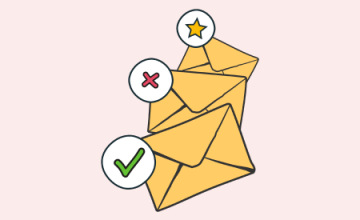

 20 october 2022, 10:54
20 october 2022, 10:54
 195179
195179
